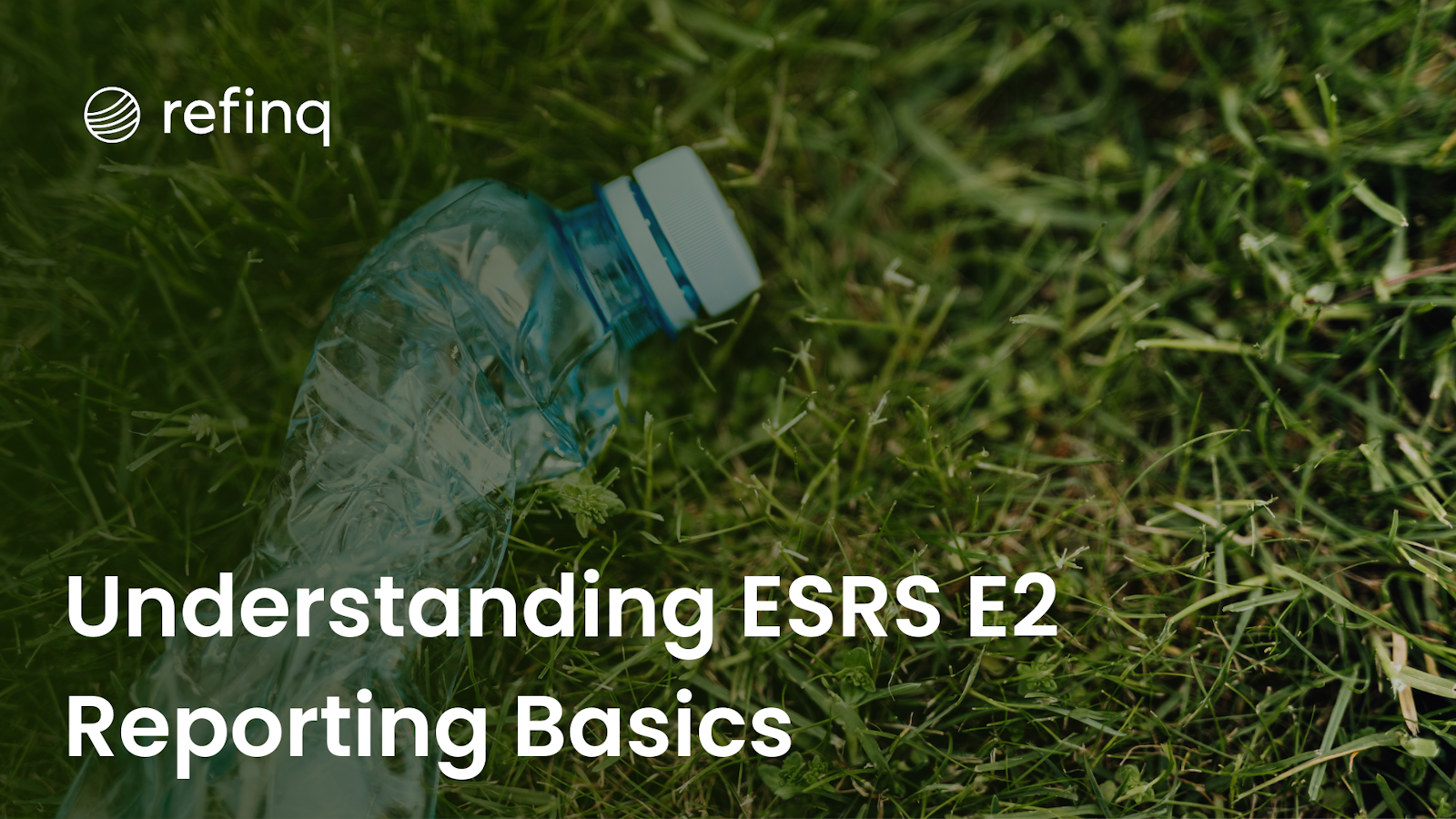

The European Sustainability Reporting Standards (ESRS) E2 have emerged as a critical framework for businesses aiming to address pollution and its impacts. Understanding ESRS E2 is essential for companies operating within the European Union to ensure compliance and promote sustainable practices. (Read the full ESRS E2 document). Companies like refinq are at the forefront of assisting enterprises in navigating these complex standards through advanced environmental risk assessments. (Discover how refinq empowers businesses).
ESRS E2 stands for European Sustainability Reporting Standards Environmental Standard 2, which focuses on pollution. Developed by the European Financial Reporting Advisory Group (EFRAG), ESRS E2 provides guidelines for companies to report on their pollution-related impacts, risks, and opportunities. (Learn more about ESRS E2).
Transparency: Enhance the quality and comparability of pollution-related disclosures.
Accountability: Hold companies accountable for their environmental impacts.
Risk Management: Encourage proactive identification and management of pollution risks.
Stakeholder Engagement: Inform investors and stakeholders about a company's pollution performance.
(Explore the draft ESRS E2 document for detailed requirements).
Companies must identify and disclose:
Air Emissions: Greenhouse gases, particulate matter, and other air pollutants.
Water Discharges: Contaminants released into water bodies.
Soil Contamination: Pollutants affecting soil quality.
Noise and Light Pollution: Impacts on local environments and communities.
(Understand more about pollution aspects in ESRS E2).
Environmental Impact: Evaluate how pollution affects ecosystems and biodiversity.
Human Health: Assess the implications for employee and community health.
Regulatory Compliance: Ensure adherence to environmental laws and regulations.
Policies and Procedures: Implement strategies to reduce pollution.
Targets and Metrics: Set measurable goals for pollution reduction.
Monitoring and Reporting: Regularly track progress and report findings.
(Learn how to respond to ESRS E2 requirements).
ESRS E2 provides a structured framework for collecting detailed data on pollution sources and levels. By adhering to these guidelines, organizations can:
Identify Pollution Hotspots: Pinpoint areas within operations where pollution is highest.
Monitor Trends Over Time: Track changes in pollution levels to assess the effectiveness of mitigation strategies.
Benchmark Performance: Compare pollution metrics against industry standards and competitors.
With insights gained from systematic tracking, companies can:
Develop Targeted Action Plans: Focus resources on the most significant pollution sources.
Adopt Best Practices: Implement industry-leading technologies and processes to minimize emissions.
Engage Stakeholders: Collaborate with suppliers, customers, and communities to reduce pollution throughout the value chain.
By reporting under ESRS E2, organizations:
Demonstrate Commitment: Show stakeholders a tangible commitment to environmental stewardship.
Facilitate Investor Decisions: Provide investors with the necessary information to make informed decisions based on environmental performance.
Meet Regulatory Requirements: Ensure compliance with EU regulations, reducing the risk of fines and legal actions.
ESRS E2 encourages:
Regular Review of Policies: Assess and update pollution management policies based on new data and technological advancements.
Employee Involvement: Foster a culture where employees contribute to pollution reduction initiatives.
Innovation: Stimulate the development of new solutions to environmental challenges.
(Learn more about implementing ESRS E2).
Adhering to ESRS E2 is crucial for companies operating within the EU to meet legal obligations and avoid potential penalties.
Transparent reporting enhances credibility with investors who are increasingly prioritizing environmental sustainability.
Demonstrating commitment to pollution management can differentiate a company in the marketplace.
Complexity: Gathering accurate pollution data across operations can be challenging.
Integration: Aligning data collection with existing reporting systems requires effort.
Knowledge Gap: Understanding ESRS E2 requirements necessitates specialized expertise.
Resource Allocation: Implementing new reporting processes may require additional resources.
refinq is a pioneering SaaS platform designed to help enterprises effectively manage environmental risks through advanced climate and biodiversity risk assessments. By processing over 2.5 billion data points from earth observations and climate models, refinq provides real-time risk evaluations and forecasts of future environmental impacts with a granularity of up to 25 meters for any global location.
Comprehensive Risk Profiles: refinq translates complex environmental data into actionable insights, enabling businesses to identify and mitigate pollution risks effectively.
Regulatory Alignment: The platform aligns its assessments with international disclosure frameworks, including ESRS, ensuring compliance with regulatory demands.
User-Friendly Tools: Offers tailored solutions such as due diligence and portfolio impact analysis, simplifying the integration of ESRS E2 standards into existing processes.
Future Forecasting: With the capability to forecast environmental impacts based on four climate scenarios extending to the year 2100, refinq empowers businesses to prioritize actions based on significant pollution risks.
By utilizing refinq's advanced geospatial analysis and machine learning capabilities, companies can streamline ESRS E2 reporting while developing sustainable, nature-positive strategies. (Explore refinq's climate solutions).
Data Collection: Gather data on all pollution sources within the organization.
Impact Analysis: Evaluate the environmental and health impacts of identified pollutants.
Set Targets: Establish clear, measurable pollution reduction goals.
Implement Strategies: Adopt technologies and practices that minimize pollution.
Use Advanced Tools: Leverage platforms like refinq to monitor pollution levels in real-time.
Regular Reporting: Maintain transparency with stakeholders through consistent reporting.
Employee Training: Educate staff on pollution management practices.
Community Involvement: Collaborate with local communities and regulators.
(Learn more about implementing ESRS E2).
Understanding ESRS E2 Reporting is essential for businesses committed to environmental sustainability and regulatory compliance. By focusing on pollution, ESRS E2 provides a framework for companies to assess their environmental impact, manage risks, and communicate transparently with stakeholders.
Platforms like refinq play a vital role in simplifying ESRS E2 compliance. By offering advanced risk assessments and actionable insights, refinq enables businesses to navigate environmental challenges effectively and develop sustainable strategies that align with regulatory standards.